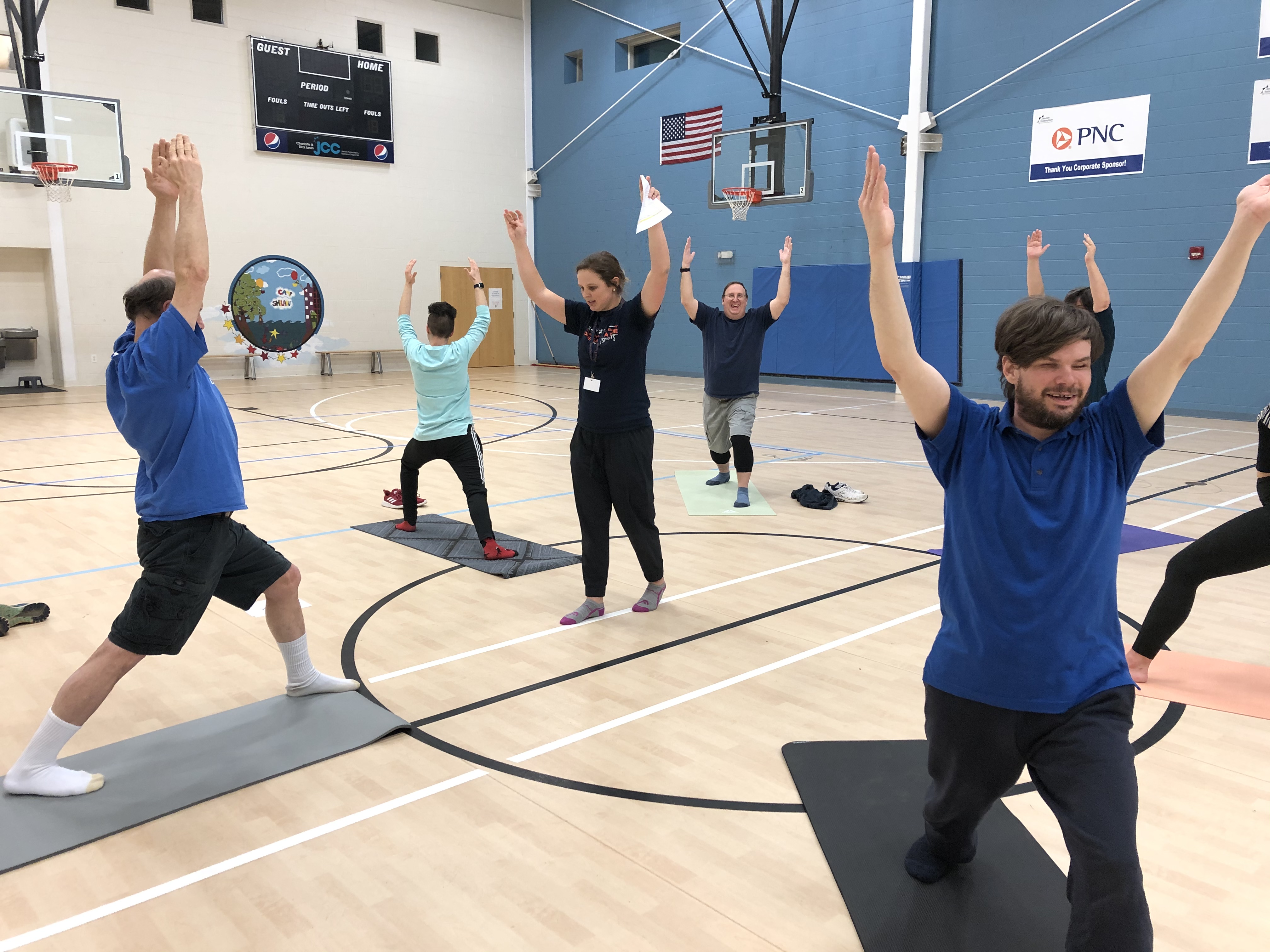Close your eyes. Stand with your feet together. Do you feel off balance or disoriented in the space around you? This feeling is often the norm for people who are blind or visually impaired.
Program Intern Jessica Long has dedicated her semester project to this issue assisting athletes with VI by introducing the tool of yoga. She began incorporating basic yoga stretching and poses into the warm-up portion of Goalball practice on February 10th.
After 2 weeks focusing on body-in-space awareness, balance and strength athletes have responded positively and have even been practicing at home! Jessica is excited to continue working with our Goalball athletes and expanding the use of yoga and stretching to Cycling warm-ups in the spring.
Jessica, an Occupational Therapy Doctoral Student, explains the important and unique impact yoga can have for people with visual impairments:
Why is yoga important for people with VI?
Yoga has been shown to be one of the most beneficial exercises to increase posture and balance for the VI population. This activity provides a variety of options to focus on whether it is for balance, strength, motor planning, flexibility, and/or mindfulness. The first basic step in yoga is to gain awareness of the self and where the body is in space, and it begins with proper breathing exercises. For those with VI, it is important to provide instruction on finding where the individual’s body is in relation to his/her environment. The goal of this program is to build the spatial awareness and strength for athletes that participate in other Bridge II Sports programs such as Goalball and Cycling. Long-term, I want to provide an opportunity to increase confidence in their motor movements when completing everyday routines.
How is it different from normal yoga?
Yoga for the visually impaired can be tailored to individual needs. Is the person fully blind? Is the person able to see light or shadows? How does the person compensate for the visual loss? Next, there should be awareness of participants’ learning styles. The biggest adaptation to this program is providing optimal verbal instruction. Imagine doing an activity blind folded and having a spouse or a friend describe how to complete it and where items are located. This can be very challenging! It is also important to provide tactile guidance whether that be providing a reference point for the individuals to locate foot placement on the mats, or using a hand held model of the desired pose for the individuals to gain a sense of how to complete it. Once the participants learn the basic poses to create a sequence, less verbal instruction would be required.



